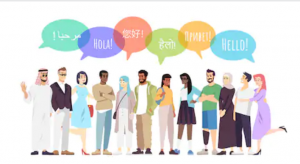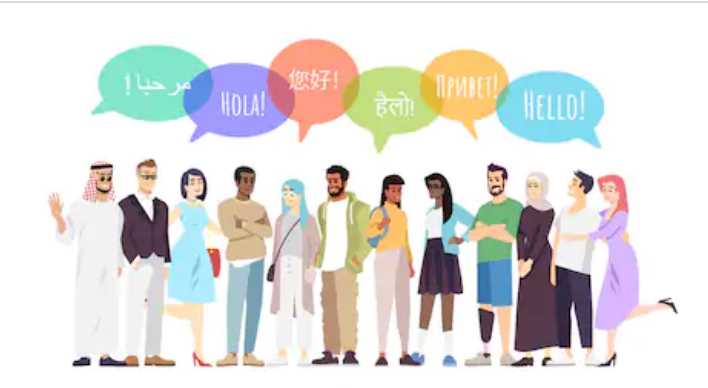To meet demand in the Fall 2019 term, our department ran two hybrid sections of CMNS 180, Introduction to Intercultural Communication. In practical terms this meant stepping up the amount of out of class and online activities while still meeting learning outcomes around improving intercultural competence in the daily lives of our students. Intercultural competency is something that really needs to be accomplished through interpersonal interactions and that is hard to do online.
 Working from an idea found in the course textbook “Introducing intercultural communication: Global cultures and contexts” by Shuang Liu, Zala Volčič and Cindy Gallois, students were asked to “Get together with several friends, family, coworkers, or students (from classes other than this one) and get people talking about (insert topic here)… Make a journal entry about content and communication dynamics of the conversation.” There were five topics spread across the semester of which the class members needed to initiate four out of five. Topics were: intercultural issues in politics The Canadian federal election happened in October), identity, cultural appropriation (always a good discussion prompted by Halloween), cultural adaptation, and conflict.
Working from an idea found in the course textbook “Introducing intercultural communication: Global cultures and contexts” by Shuang Liu, Zala Volčič and Cindy Gallois, students were asked to “Get together with several friends, family, coworkers, or students (from classes other than this one) and get people talking about (insert topic here)… Make a journal entry about content and communication dynamics of the conversation.” There were five topics spread across the semester of which the class members needed to initiate four out of five. Topics were: intercultural issues in politics The Canadian federal election happened in October), identity, cultural appropriation (always a good discussion prompted by Halloween), cultural adaptation, and conflict.
NO ONE was excited about the prospect of completing this assignment but some took it on right away while others lagged to the very last minute, and everywhere in-between.
 However journaling was not the whole assignment. The culmination of all those Blackboard journal entries was our One Day (research) Project in the final class session. Drawing from what they had written, each student was asked to answer six questions based on the Who, What, Where, When, How and Why framework (concentrating not on the content of the discussions but on the dynamics). The answers were then crowdsourced onto six posters and the class divided up to look for patterns in the answers, relate those patterns to things they had been learning about intercultural communication, and to ultimately come up with a list of “best practices” for engaging in tough conversations around intercultural issues.
However journaling was not the whole assignment. The culmination of all those Blackboard journal entries was our One Day (research) Project in the final class session. Drawing from what they had written, each student was asked to answer six questions based on the Who, What, Where, When, How and Why framework (concentrating not on the content of the discussions but on the dynamics). The answers were then crowdsourced onto six posters and the class divided up to look for patterns in the answers, relate those patterns to things they had been learning about intercultural communication, and to ultimately come up with a list of “best practices” for engaging in tough conversations around intercultural issues.
Some of the things that surprised many of the students were that:
* family, friends, coworkers and even strangers were interested in elevating casual conversation beyond surface topics (i.e. the weather 🙂 )
* they learned a lot about the people they thought they already knew really well
* they started to look forward to having the conversations
* the people in their lives were interested in the details of what they were learning in class
In the end our list became “best practices for getting more comfortable with having tough conversations.”
First, choose:
* people you already know or are in a context where they might already expect such a conversation (i.e. university)
* places where you are comfortable and where a conversation is most likely to happen naturally
* places where you already know people
* places where you go frequently
Then:
* Work towards going out of your comfort zone (engaging with new people in public places)
* Find new comfortable places
* Pay attention to surroundings for what might impact participants willingness to engage
* Watch for right time/place; Make sure conversations are in a safe environment
* Consider age/maturity of those in conversation
* Approach topics casually
* Make conversations one-on-one personal
* Do during normal routines of the day; During free time, preplanned w no surprises
Think about:
* Using an indirect approach (don’t be blunt and demanding about having a conversation)
* Looking for common ground
* Demonstrating attention/active listening
* Taking responsibility to lead/guide the conversation
* Using current issues
* Always having an eye to building relationships
* Having conversations regularly
* Possibilities for having a facilitator (third-party)
Prepare yourself to:
* Be willing to ask questions
* Show curiosity
* Validate others
* Be present in the conversation
* Give prompts
* Value others opinions
* Use examples
* Be open-minded and show others that you want to listen
* Be willing to challenge your own beliefs and ways of thinking
* Be intentional
Improve your own comfort level by:
* Personally engaging in and learning about topic so you feel comfortable and can engage others
* Start with video/article/info to create interest, knowledge and participation
* Developing relationships and meaningful connections to learn about others interests and to create an environment where one feels safe addressing culturally sensitive topics
* Setting aside intentional time or incorporating into everyday conversations

